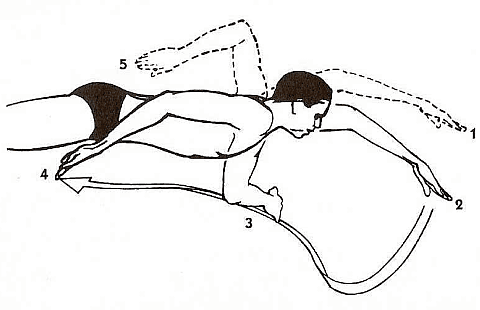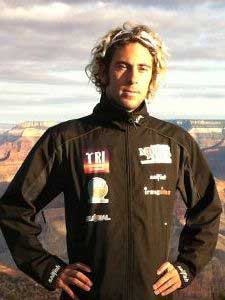Swim Technique – Part 1

While the swim portion of the ironman may only represent 10 percent of the race, it does play a significant role in the outcome. The time taken to exit the water is just a fraction of the whole picture of performance— the state in which we exit the water and how much energy is expended during the swim is critical to the overall performance at the end of the day.
 Article by Alun ‘Woody’ Woodward, Certified ironguides Coach – UK/Hungary
Article by Alun ‘Woody’ Woodward, Certified ironguides Coach – UK/Hungary
For SWIMBIKERUN.ph
There are two key elements to the swim: technique and fitness. Different combinations of these elements can lead to very different results:
* technique plus fitness can equal a great swim and great race
* technique with no fitness can be a great swim but terrible race
* bad technique but great fitness can lead to a slower swim but great race.
I want to look at training for the swim by separating the topics of technique and fitness into two articles and then show how we can bring these together for your best race ever in a final article.
TECHNIQUE
Swimming is a very technical sport and, as such, is hard for the brain to cope with. Professional swimmers spend hours per day in the pool developing their techniques and searching for the mystical feel for the water. They will perform endless drills to fine-tune small details such as hand position, finger position, timing of the kick, etc. Even with all this focus on technique for races lasting just 2-4 minutes, they are unable to hold perfect form in the latter stages.
As triathletes we simply do not have the training time available to do the above. On top of that, we are also racing in the water for at least 48 minutes in an ironman— there is no way we are going to maintain a perfect technique for this length of swim.
As triathletes we must look at the technique we need to cope with race conditions and then build a simple form that is easy to perform and maintain for the duration of the event — a technique that will not fall apart under duress.
Swimming in open water with lots of athletes around us requires a stroke that is stable and not easily disturbed by knocks and currents. To do this we need a slightly wider hand entry than we do in a pool stroke; the hands should enter the water slightly wide of the head, shoulder width, and right in front of the head. Please check out the video below.
If we gently place our hands into the water and this water is moving sideways or back against us, our hand is going to be stopped or moved. We need to ensure that we hit the water hard and thrust the hand straight forward through the water with force to full extension. The hand should enter the water at an angle of about 30 degrees and push forward under the surface, always moving slightly down as it moves forward. The key here is thrusting the hand into the water—the more force used, the faster the hand reaches full extension and the less chance for thinking.
Once the hand reaches full extension, we need to get in position to pull. To do this, we keep the hand in position and kick the elbow outwards and slightly towards the surface – this brings the hand in position to powerfully pull straight back.
Following these key points it is possible to build a very stable and effective technique for triathlon swimming, summarized simply as:
SHOULDER-WIDTH HAND ENTRY
DRIVE HAND IN AND FORWARD AGGRESSIVELY TO FULL EXTENSION
KICK OUT ELBOW AND PULL BACK HARD
This technique is easy to develop and given a week of practice most triathletes can master these skills to a reasonable level of efficiency. Have a friend take a video of you to check that you are doing everything correctly, don’t look for speed now but simply focus on the three points and learn how it feels when you are doing this accurately.
TOOLS
Swim tools can really help speed up this learning process. An extra-large set of paddles will help create stability in the water and they force better movement patterns because they make it hard to pull through the water. The TYR catalyst paddle was designed to enhance elbow bend and bring your hands/arms into a better position to pull.
Using a pull buoy aids flotation and removes the focus on kicking and body position, which in turn allows us to concentrate better on what the arms are doing!
LEARNING
This technique is easy to learn as it keeps things simple: focusing on doing the three points mentioned above correctly removes many problems and develops traits that other technique-training systems spend hours trying to establish but never really succeed in as the movement patterns are too complex.
Spend your time learning to feel when the technique is correct. Make some key points that are easy for you to remember and use those as a cue when your form starts fall apart to get back on track. These key points will always be individual so feel what is right for you — create a picture with each one and set these in your mind.
Personally I think of the sound the hand makes as it whooshes through the water to full extension. Then at full extension, the elbow twitches out and towards the surface to start the pull back. Simply repeating this during a swim ensures every stroke is a better stroke. As a bonus it’s a great distraction from the pain and effort in hard sets!
The process of learning this technique should not take longer than a week to 10 days. Once established it’s time to start work on building your fitness using your new technique!










